Key terms, acronyms, abbreviations and symbols used in the study by Jean-Paul Bouttes: "Nuclear waste: a comprehensive approach"
Glossary of technical and scientific terms
Key acronyms and abbreviations
Key symbols and units of measurement
| Sources: www.andra.fr/lexique, www.radioactivite.com and Bernard Bigot (dir.), Dictionnaire des sciences et techniques nucléaires, 4e éd., Omniscience, 2008.
Readers who would like additional information are encouraged to consult the following books: Yves Chelet, La Radioactivité. Manuel d’initiation, NucléoN, 2006; Dominique Grenêche, Histoire et techniques des réacteurs nucléaires et de leurs combustibles, EDP Sciences, 2016; and Maurice Tubiana (dir.), Radiobiologie, radiothérapie et radioprotection, Hermann, 2008. The Fondation pour l’innovation politique extends special thanks to Abdellah Bouhend, Margot Cocquet and Léa Ghilini who helped coordinate the editorial content of this glossary. |
Glossary of technical and scientific terms
This definition is primarily drawn from the one on page 141 of the “Dictionnaire des sciences et techniques nucléaires”, compiled by Bernard Bigot and edited by Gérard Santarini, 4th edition, Omniscience CEA, 2008.
Actinides. Family of chemical elements with atomic numbers (number of protons in the atom) equal to or greater than actinium (atomic number 89). Four actinides occur naturally on Earth today: actinium (89), thorium (90), protactinium (91) and uranium (92). There are also actinides with atomic numbers higher than uranium: transuranic elements (plutonium, americium, neptunium and curium). A distinction is drawn between major actinides (for instance uranium and plutonium) and minor actinides (for instance americium, neptunium and curium). The latter are produced in spent nuclear fuel in much smaller quantities than major actinides. Minor actinides constitute, along with fission products, high-level waste (HLW) in France. These are the heaviest nuclei (number of protons and neutrons), meaning they are unstable and radioactive.
ADS (Accelerated Driven System). See Nuclear fission.
NEA (Nuclear Energy Agency). Established in 1958, the NEA is a specialised agency within the Organisation for Economic Cooperation and Development (OECD), the intergovernmental organisation based in Paris. The mission of the NEA is to assist member countries in maintaining and further developing the scientific, technological, and legal bases required for a safe, environmentally sound and economical use of nuclear energy for peaceful purposes. Its 30 member countries represent nearly 85 % of global nuclear power capacity (installed capacity).
IEA (International Energy Agency). The IEA is an autonomous intergovernmental organisation established as part of the Organisation for Economic Cooperation and Development (OECD). It includes 30 member countries, most of which are oil importers. Founded in 1974 after the first oil shock, the IEA’s original mission was to coordinate measures to be taken in the event of shortages on oil markets and, more generally, to ensure security of supply for its members. The agency has since expanded its field of expertise to include all energies, and it now addresses the issues of climate change and energy access, involving a number of emerging and developing countries in its work.
IAEA (International Atomic Energy Agency). This is an international organisation within the United Nations system. Its mission is to promote the peaceful use of nuclear energy and limit its use for military purposes. Founded in 1957, it was tasked in 1968, following the ratification of the Treaty on the Non-Proliferation of Nuclear Weapons (NPT), with key verification responsibilities under the treaty. The IAEA plays a central role in scientific cooperation in the field of nuclear energy, including for waste management, and in establishing international safety standards.
Andra (Agence nationale pour la gestion des déchets radioactifs). Andra is the government agency that oversees the long-term management of radioactive waste produced in France.
ASN (Autorité de sûreté nucléaire). The ASN, France’s nuclear safety authority, is an independent administrative body with a threefold mission: regulate, verify nuclear activities, and inform the public. It relies on technical expertise in drafting its decisions, the main source being the IRSN (French Institute for Radiation Protection and Nuclear Safety).
Bq/g (becquerels par gramme). The unit of measurement of radioactivity of a body, corresponding to the number of disintegrations per unit of mass. Also see Disintegration.
BRGM (Bureau des recherches géologiques et minières – Bureau of Geological Research and Mining). France’s leading public institution specialising in earth science applications for the management of surface and subsurface risks and resources.
CCS (carbon capture and storage). CCS technology involves capturing CO2 at the source where it is produced to prevent it from being released into the atmosphere. The CO2 extracted and transported is then stored underground in geological formations where it can be sequestered for the long term.
Trophic chain. Organisms within an ecosystem, ranging from primary producers to the highest echelons of the food chain.
CNE2 (National Assessment Board). CNE2 was instituted by the law of 28 June 2006 setting national policy for the sustainable management of radioactive materials and waste in France. It replaced the first National Assessment Board, CNE1, which was created by the Law of 31 December 1991 (the so-called “Bataille law”). CNE2 comprises 12 members and is tasked with assessing on an annual basis the state of research and studies on the management of nuclear materials and waste. Its scientific assessment is then used to produce an annual report intended for Parliament and submitted to the French Parliamentary Office for the Assessment of Scientific and
Technological Choices (OPECST).
Cogema (Compagnie générale des matières nucléaires). Formerly the largest subsidiary of the CEA, it was founded in 1976 and was renamed Areva NC (in March 2006), when it became a wholly-owned subsidiary of industrial firm Areva, then Orano Cycle (January 2018). Orano Cycle specialises in activities related to the uranium cycle when it is used as a nuclear fuel: mining operations, production and enrichment of the fuel, processing and recycling of spent fuel (“nuclear waste”) and, lastly, decontamination and dismantling of fuel cycle facilities at the end of their life.
Glass package. Glass was chosen in the 1960s by France and the international community as the material to be used to confine fission products, due to the flexibility of its disordered structure, which allows it to confine a number of chemical elements. The radionuclides become part of the structure of the glass (or glass matrix), so the process involves confinement at an atomic scale rather than mere encasement. High-level waste produced in France in the form of glass matrices when spent fuel is processed is intended to be stored for the long term in deep geological repositories. Also see Glass matrices and Vitrification.
Criticality (risk of). See Nuclear fission.
Radioactive descendants. POf the many types of atoms that exist in nature, a few tens have unstable radioactive nuclei (radionuclides). While most of these radionuclides disintegrate directly into stable, non-radioactive elements, three (uranium 238, uranium 235 and thorium 232) have several radioactive descendants, which constitute disintegration chains each containing between 10 and 15 different radionuclides.
Disintegration. Abbreviated form of radioactive disintegration. The process by which one nuclide breaks down into several fragments (particles and nuclei, which are disintegration products, photons) to reach a lower-energy and therefore a more stable state. The characteristics of this transformation depend solely on the state of the original nuclide, not the process that produces it. The nature of radioactive disintegration does not change depending on whether it is spontaneous (disintegration of an unstable nuclide) or induced (decay of a nucleus formed during a nuclear reaction). The probability of disintegration follows the exponential decay law based on units of time1. Also see Bq/g.
DGEC (Direction générale de l’énergie et du climat). The DGEC is in charge of formulating and implementing the French government’s policies related to energy and energy raw materials and the fight against global heating and atmospheric pollution.
Dioxins. Dioxins are a group of chemically-related compounds that are persistent environmental pollutants.
DOE (Department of Energy). The Department of Energy is part of the federal government of the United States.
Outlets. Radioactivity is mainly transported (or transferred) from the waste disposal cells into the environment of human communities via water. The places where radioactivity can reach (or encounter or emerge into) the environment are called potential outlets. They can be rivers, the groundwater, or wells (this notion of outlet also applies to surface and subsurface storage).
Fissile. Refers to a nuclide that is capable of undergoing fission under the impact of a neutron.
Nuclear fission. A nuclear power plant produces electricity thanks to the heat released when uranium atoms fission. Uranium is an element made up of heavy atoms (the nuclei of uranium atoms are heavy since made up of a large number of protons and neutrons). These atoms have nuclei that can split into two smaller nuclei under the impact of a neutron. Insofar as the neutron has no electrical charge, it can easily approach the nucleus and penetrate it without being repelled. This phenomenon is referred to as nuclear fission. Fission results in the release of large quantities of energy and, at the same time, the release of two or three so-called secondary neutrons. These neutrons can in turn cause other nuclei to split, releasing energy and other neutrons, and so on. This is called a chain reaction. Criticality factor k represents, for each fission, the average number of secondary neutrons that in turn cause fission. The value k determines whether the chain reaction becomes supercritical (k > 1) or not (k < 1). Criticality must remain equal to 1 in a reactor. Criticality excursions above this value are only tolerated if they are brief and limited (not exceeding a few per thousand).
It is possible to select fuels in such a way that, in a reactor, less than one neutron per fission produces another fission. In this case, the chain reaction cannot be sustained on its own. Such reactors are called subcritical. Neutrons must be brought in from an outside source. This is the principle behind ADS (Accelerator-Driven Systems). ADS are part of the long-term innovation landscape. They are hybrid reactors requiring the combination of two sophisticated technologies, accelerators and subcritical fast reactors, with the accelerators serving to provide additional neutrons. These extra neutrons allow the reactor to operate in subcritical regime while producing energy. This technology would reduce waste for instance by burning a portion of the actinides. It is still in the research phase. A first demonstrator, preceding an industrial scale prototype, is the Myrrha project, supported by the European Community and developed at the MOL laboratory in Belgium.
LILW-SL (low- and intermediate-level waste, short-lived). LILW-SL primarily results from the maintenance and operation of nuclear power industry facilities and the activities of the CEA. It is mainly found on clothing, tools, gloves or filters. The specificity of this waste is that most of the radioactive substances it contains have a short half-life. Given that it starts out with a low to intermediate level of radioactivity, this waste will cease to pose a risk after about 300 years, since radioactivity naturally decreases over time.
IPCC (Intergovernmental Panel on Climate Change). For more than 30 years, the IPCC has been assessing the state of scientific knowledge on climate change, its causes and its impacts. It also identifies possible ways to limit global warming.
Gray (Gy). Unit used to measure the dose physically “absorbed” by matter. It represents the energy absorbed per 1 kilogram exposed to ionising radiation carrying 1 joule of energy.
HL (high level). The waste produced in France with the highest level of radioactivity is high-level waste, most of it coming from the nuclear power industry. It corresponds primarily to the highly radioactive residue from spent fuel or the processing of fuel from nuclear power plants. This waste can have a very long life (hundreds of thousands of years).
ICRP (International Commission on Radiological Protection). The ICRP is an international nongovernmental organisation established to advance, for the public benefit, the science of radiological protection by providing recommendations and guidance on aspects of protection against ionising radiation.
IRSN (Institut de radioprotection et de sûreté nucléaire – Institute for Radiological Protection and Nuclear Safety). The IRSN is the French national public expert for research and knowledge in the fields of nuclear and radiological risks. It is the main provider of scientific and technical support to the ASN. The IRSN’s field of expertise spans all risks associated with the ionising rays used in industry or medicine, as well as natural radiation.
Isotopes. Two atoms of the same chemical element are called isotopes when they differ only by their number of neutrons. Isotopes of a same element have identical chemical properties but different physical properties (notably stable or radioactive). Also see Radionuclides and Ionising radiation.
Lixiviation. Placing of a solid body in contact with a liquid to extract certain elements from it. By extension, lixiviation can refer to any experiment that involves altering a solid in a liquid.
Glass matrix. The matrices used to hold high-level radioactive products (HLW) are made of borate glasses, notably because of its resistance to lixiviation and temperatures. Vitrification is an advanced technological operation that involves incorporating radioactive waste into glass to give it a stable encasement, in the form of packages suitable for storage or disposal. Also see Glass packages and Vitrification.
ILW-LL (intermediate-level waste long-lived). ILW-LL mostly comprises the metal objects (cladding, hulls and end-caps) placed around the fuel used in nuclear reactors. It also includes residue (waste from effluent treatment, equipment…) associated with the operations or maintenance of nuclear facilities and the fabrication of certain nuclear fuels.
MOX (mixed oxides). MOX is a mix of oxides obtained from the processing of spent fuel from nuclear power plants. Used as a nuclear fuel in light water reactors, it contains about 92% “depleted” uranium and 8% plutonium.
mSv (millisievert). Unit for measuring the dose received by the human body in order to evaluate the impact of radiation on the individual.
Neutrino. An elementary particle with no electrical charge, little or no mass, with only weak and electromagnetic interactions, involved in the process of radioactive emission. The neutrino is not to be confused with the neutron, which is an elementary particle constitutive of the atomic nucleus.
Neutronics. Neutronics (or the transport of neutrons) is a branch of physics that studies how neutrons move through matter and the reactions they cause, in particular the generation of power through the fission of heavy nuclei.
OPECST (Office parlementaire d’évaluation des choix scientifiques et technologiques – French Parliamentary Office for the Assessment of Scientific and Technological Choices). OPECST is tasked with providing information both to the National Assembly and the Senate. It is composed of 18 National Assembly members and 18 Senators, all nominated in a way that ensures proportional representation of political groups. By law, this body’s mission is to “inform Parliament of the consequences of scientific and technological options, especially to guide its decisions”. It thus provides Parliament with expertise to underpin in long-term policy choices. To this end, the Office gathers information, especially through hearings with prominent experts, creates study programmes, and conducts assessments. It is assisted by a scientific council the composition of which reflects the wide range of scientific and technological disciplines.
Orano. Formerly Areva and Cogema. Orano is a French multinational specialising in nuclear fuel activities, from the front- to the back-end of the cycle. It was formed in 2001 via the merger of three French companies operating in the nuclear sector.
Organochlorines. Organochlorines are synthetic organic compounds derived from chlorine. After being used as insecticides for many years, they have accumulated in the environment. They are called “persistent organic pollutants” (POP) and can thus accumulate in the food chain.
Organophosphates. One of the largest families of insecticides with more than 100 molecules identified. They have been sold since the 1950s and became a mainstay in the insecticide market in the 1970s thanks to their low persistence, their strong insecticidal effects, their low accumulation along the food chain, and also following bans of many insecticides from the organochlorine family.
LLFP (long-lived fission product). Nuclear fission notably gives rise to fission products, a small portion of which – seven radionuclides (technetium 99, tin 126, selenium 79, zirconium 93, caesium 135, palladium 107, iodine 129) – is long-lived: the half-life of these radionuclides ranges between 200,000 years and a few million years. In France, it is estimated that some 8 tonnes of fission products are still radioactive when they are vitrified every year.
PNGMDR (Plan national de gestion des matières et des déchets radioactifs – French National Plan for the Management of Radioactive Materials and Waste). Sustainably managing waste in a way that protects human health, security and the environment requires a strategy for the management of all radioactive materials and waste, regardless of their origin (nuclear power, conventional industry, hospitals, research centres…). The PNGMDR is the State’s strategic oversight tool for managing radioactive materials and waste. It defines the solutions to be adopted to manage these substances and how those solutions are to be implemented (recycling, disposal, temporary storage, etc.).
ppm (parts per million). Unit of measurement commonly used by scientists, notably to calculate the pollution found in the air and, more generally, in the environment.
Radionucleides. Atoms with unstable and therefore radioactive nuclei. Also see Isotopes and Ionising radiation.
Braking radiation (Bremsstrahlung). Radioactive disintegrations can be characterised by the emission of electrons, which is known as beta radioactivity. The electrons emitted by this beta radioactivity can be slowed and their trajectory deflected if they pass in the vicinity of nuclei, causing a so-called “braking” photon to be emitted; braking radiation is the origin of the X-rays sometimes associated with this beta radioactivity, especially for certain long-lived fission products such as technetium 99.
Ionising radiation. The rays emitted by radioactive sources (of natural or artificial origin) are particles, or electromagnetic gamma rays that are very high frequency and high energy (higher than X-rays). The main particles are:
- α-rays, composite particles consisting of two neutrons and two protons
(helium atom); - β-rays, electron;
- isolated neutron.
α-rays can be stopped by as simple sheet of paper. ß-rays can be stopped by a sheet of glass or aluminium, but it takes a metre of concrete to stop γ particles and neutrons. These rays are ionising if they have enough energy to eject one or more electrons from the atoms they encounter, transforming them into electrically charged ions. Whether of natural or artificial origin, the radiations are the same, and they have the same effect on the atoms of the cells in living tissue. Also see Isotopes and Radionuclides.
Subcritical reactors. See Nuclear fission.
BWR (boiling water reactor). Most BWRs were built in the United States, Japan, Sweden, Finland, Russia and Switzerland. This technology makes up about 16% of total reactors in operation across the globe. A BWR runs on enriched uranium with the water circulating through the core serving as a coolant and moderator. Contrary to pressurised water reactors, the cooling water is turned into steam in the core (hence the name “boiling water”) and goes directly into the turbine, with no secondary circuit.
PWR (pressurised water reactor). There are more PWRs in the world than any other kind of reactor. They make up about two-thirds of the large reactors in operation, and most of the ones that are under construction or in planning. In France, all the reactors used to generate electricity are PWRs. These reactors use enriched uranium as a fuel. The water serves as a moderator and coolant. To be preserved in a liquid state even at temperatures of 300°C, water is maintained under pressure, hence the name “pressurised water”.
FNR (fast neutron reactor). FNRs use a highly enriched fuel combining uranium and plutonium (the main fuel source) under the chemical structure of oxide, carbide, nitride or a metal alloy. With a fuel that is 15 or 20% enriched with uranium 235 or plutonium, it is no longer necessary to slow the neutrons as is required in traditional pressurised water or boiling water reactors. These reactors thus do not use a moderator, as they are designed to leverage the maximum energy potential of the fuel. The heat exchanger fluid used is a liquid metal (sodium or lead) or a gas (such as helium).
Spectrometry. Spectrometry is based on the study (qualitative and quantitative) of the spectra produced by the interaction of matter with various kinds of radiated energy. Nuclear waste is easy to trace since of all physical and chemical phenomena, radioactivity is most readily measured, and with a remarkable degree of accuracy: each radioactive element has its own spectral “signature” based on the types of energy-frequency radiation it emits. Statistical analysis of spectra can, if a database is prepared beforehand, allow for a material to be recognised instantly. Quantitative analysis can be done by determining elemental concentrations based on standardisation curves created with samples of the same type and known concentrations.
VLL (very low level). VLLW is waste with a level of radioactivity that usually ranges between 1 and 100 Bq/g, with an average of about ten becquerels per gram, which is close to natural radioactivity.
Butolinum toxins. Botulism is a serious neurological disorder caused by a very powerful toxin produced by the Clostridium botulinum bacterium. The latter notably develops in improperly stored food, and the illness is typically the result of food poisoning.
Transmutation. Transmutation (nuclear) refers to the transformation of a chemical element into another element (or several others) through a modification of the atomic nucleus. In the core of a nuclear reactor, the most significant transmutation in terms of mass is the transformation of uranium into plutonium.
Transuranic elements. A family of chemical elements that are heavier than uranium (atomic number 92), the most important of which are neptunium (93), plutonium (94), americium (95) and curium (96). They are also part of the actinide family. Neptunium, americium and curium are called “minor actinides” as they are found in smaller quantities than plutonium in spent fuel. Inside the reactor, they are derived from uranium during secondary reactions other than fission.
UOX (uranium dioxyde). UOX fuel is the standard fuel used in light water reactors. It is made up of uranium oxide enriched with uranium 235. The fuel most used in nuclear reactors, it is made by converting then enriching natural uranium.
Decarbonised energy carrier. Energy can take different forms: mechanical energy produced by a waterfall, chemical energy associated with fuels such as oil or coal, radiant energy such as solar power. Some “energy forms” make it possible, after transformation, to use several primary energy sources that are naturally available (wind, oil, coal, uranium…), can be easily transported, and applied to a variety of uses. This is especially the case of electricity and, to a lesser degree, hydrogen. These “energy forms” are called “energy carriers”. Some allow primary energy sources that produce no carbon emissions to be used. They are referred to as “decarbonised energy carriers”. Electricity and hydrogen are decarbonised energy carriers when produced from nuclear or renewable energy sources. (The term “energy vector” (vecteur énergétique) used in the French-speaking world would reflect the semantic richness of this definition better than “energy carrier” ordinarily used in English).
Vitrification. See Glass matrix and Glass package.
WEC (World Energy Council). WEC is an international nongovernmental organisation that brings together actors from the private and public energy sectors of most countries. Its national committees represent almost 100 countries. The WEC produces forward-looking analyses of various energy-related issues (energy access, security of supply, technologies, climate and pollution), and it contributes to energy debates, notably at the international level.
Key acronyms and abbreviations
Ademe. Agence de l’environnement et de la maîtrise de l’énergie – French Environment and Energy Management Agency.
NEA. Nuclear Energy Agency
IEA. International Energy Agency
IAEA. International Atomic Energy Agency
Andra. Agence nationale pour la gestion des déchets radioactifs – French National Radioactive Waste Management Agency
ASN. Autorité de sûreté nucléaire – French nuclear safety authority
BRGM. Bureau des recherches géologiques et minières – French Bureau of Geological Research and Mining
CCS. Carbon capture and storage
CEA.Commissariat à l’énergie atomique et aux énergies alternatives – French Atomic Energy and Alternative Energies Commission
CEC. Commission of the European Communities
CGE. Conseil général de l’économie – French General Economic Council
CGEDD. Conseil général de l’environnement et du développement durable – French General Council for the Environment and Sustainable Development
Cigeo. French geological disposal industrial centre
CLI. Commission locale d’information – Local Information Commission
CLIS. Comité local d’information et de suivi – Local Information and Monitoring Committee
CNDP. Commission nationale du débat public – National Public Debate Commission
CNE. Commission nationale d’évaluation – National Assessment Commission
Cogema. Compagnie générale des matières nucléaires
CPDP. Commission particulière du débat public – Special Public Debate Commission
CSD-V. Conteneur standard de déchets vitrifies – Standard Vitrified Waste Container
DGEC. Direction générale de l’énergie et du climat – Directorate-General for Energy and the Climate
DOE. Department of Energy
EDF. Électricité de France
EPR. European Pressurised Reactor
LLW-LL. Low-level waste, long-lived
LILW-SL. Low- and intermediate-level waste, short-lived
IPCC. Intergovernmental Panel on Climate Change
HL. High-level
HCTSIN. Haut Comité pour la transparence et l’information sur la sécurité nucléaire – High Committee for Transparency and Information in Nuclear Safety
HFC. Haut facteur de conversion – High conversion factor
ICRP. International Commission on Radiological Protection
IRSN. Institut de radioprotection et de sûreté nucléaire – French Institute for Radiological Protection and Nuclear Safety
ISDD. Installation de stockage de déchets dangereux – Hazardous waste storage facility
ILW-LL. Intermediate-level waste, long-lived
MOX. Mixed oxides
MRPWR. Multiple recycling in PWRs (MRREP – Multirecyclage en REP)
OECD. Organisation for Economic Cooperation and Development
OPECST. Office parlementaire d’évaluation des choix scientifiques et technologiques – French Parliamentary Office for the Evaluation of Scientific and Technological Choices
LLFPs. Long-lived fission products
PNGMDR. Plan national de gestion des matières et des déchets radioactifs – French National Plan for the Management of Radioactive Materials and Waste
PPE. Programmation pluriannuelle de l’énergie – Multiyear Energy Plan
RBMK. Reaktor Bolshoy Moshchnosti Kanalnyi
BWR. Boiling water reactor
R&D. Research and development
PWR. Pressurised water reactor
FNR. Fast neutron reactor
SMR. Small Modular Reactor
VLL. Very low-level
UNGG. Uranium naturel graphite gaz – Natural uranium graphite gas
WEC. World Energy Council
Zira. Zone d’intérêt pour la reconnaissance approfondie – Zone of interest for in-depth exploration
Key symbols and units of measurement
Bq: becquerel.
Bq/g: becquerel per gram.
cm: centimetre.
CO2: carbon dioxide.
eV: electron-volt.
g: gram.
Gy: gray.
ha: hectare.
hab.: habitant.
keV: kilo electron volt.
kg: kilogram.
km²: square kilometre.
kWh: kilowatt-hour.
m²: square metre.
m³: cubic metre.
MeV: mega electron-volt.
mSv: millisievert.
MWe: megawatt electric.
MWh: megawatt-hour.
ppm: parts per million.
Sv: sievert.
t: tonne.
TBq: terabecquerel.
TWh: terawatt-hour.

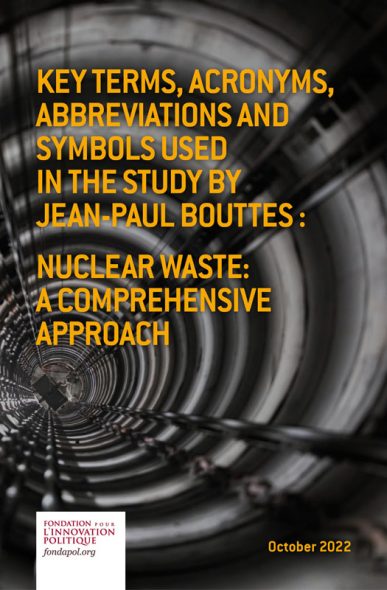
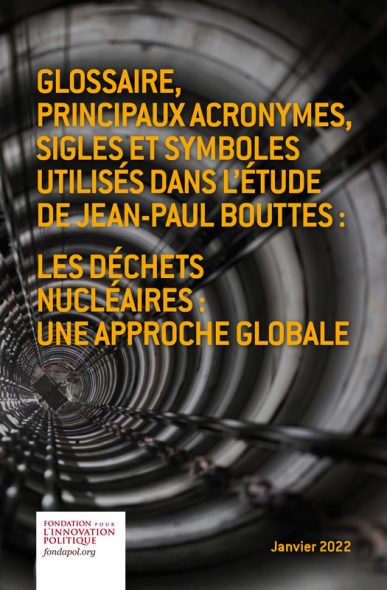
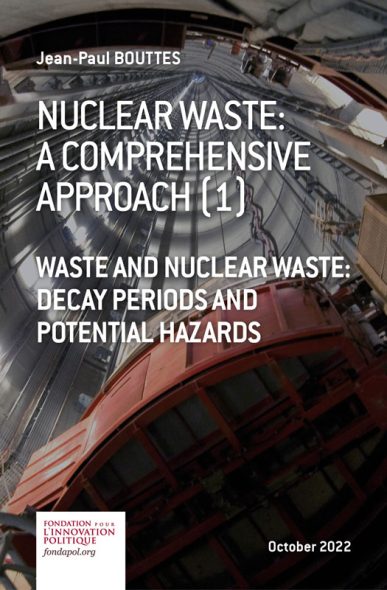
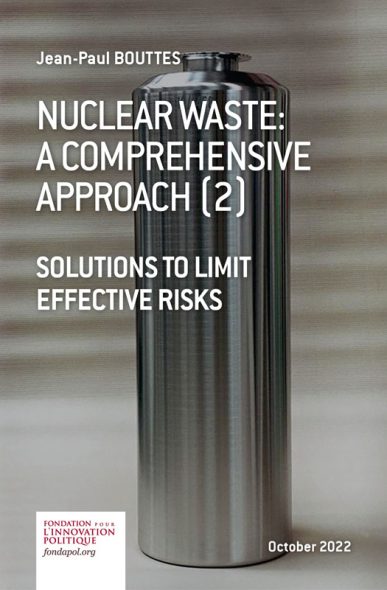
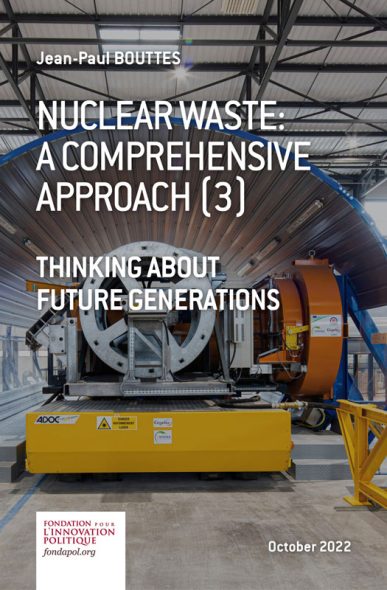
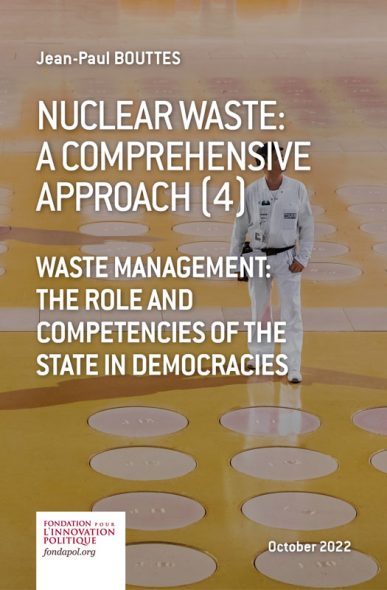
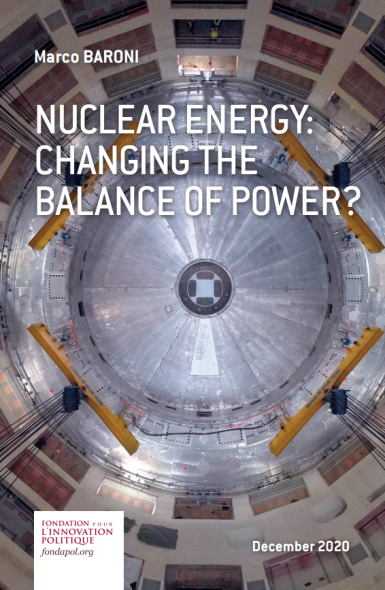




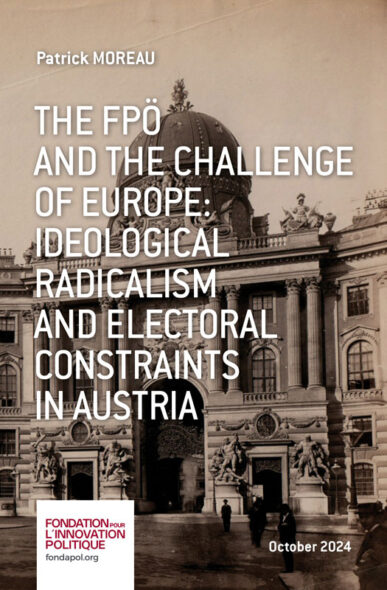

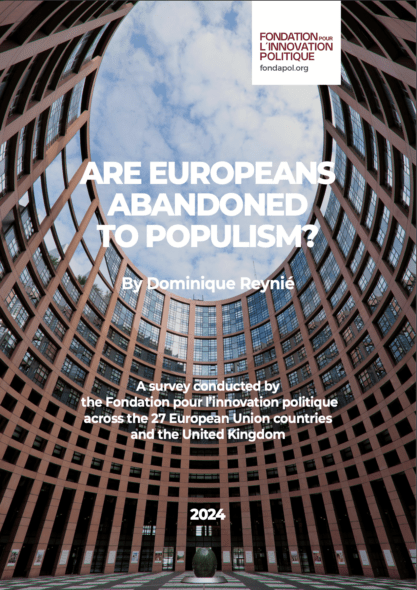
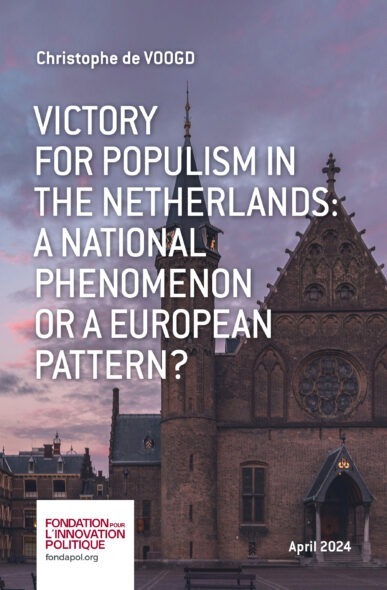
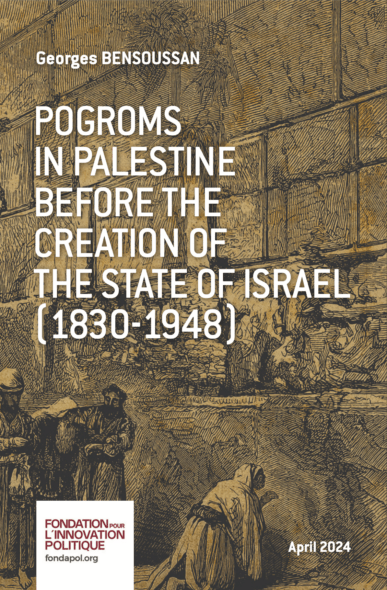
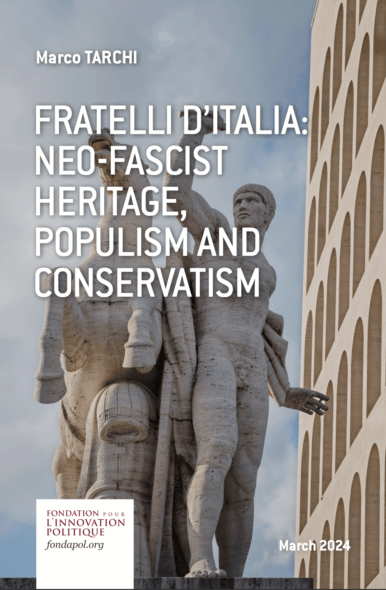
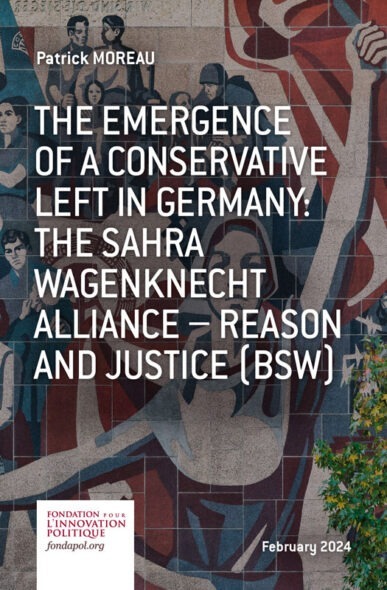
No comments.